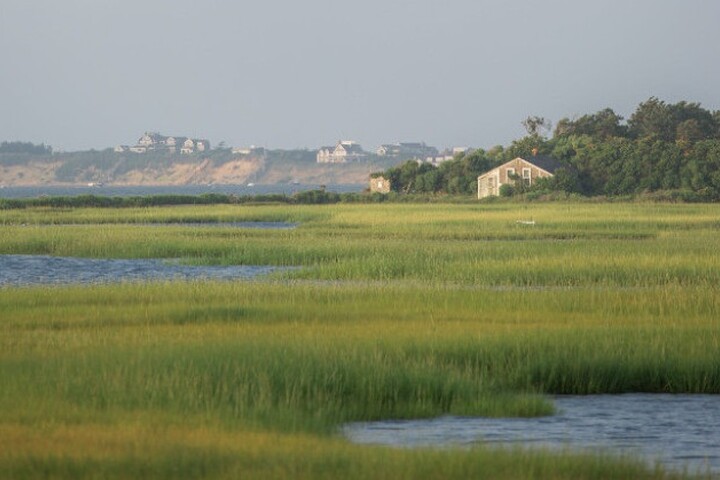
Saltmarshes are one of the most productive ecosystems on Earth. Each day rising tides bring in a wash of fresh nutrients and tiny marine organisms to feed the unique plants and animals within the saltmarsh.
Folger's Marsh, located next to the Shipwreck & Lifesaving Museum, is a diverse and ecologically important natural habitat on Nantucket. Protected from wave action in Nantucket Harbor by a sandbar, barrier beach, and dune, this extensive saltmarsh provides home to many unique plants, beautiful birds (including a few rare ones) as well as fish, shellfish, and crustaceans. Connected by a tidal creek to Nantucket Harbor, tides flow in and out of Folger's Marsh twice a day creating a beautiful and highly diverse saltmarsh.
Folger's Marsh provides food for many shorebirds and colonial waterbirds that nest on Nantucket or move through on migration, stopping to feed on organisms and organic matter found in the damp, spongy peat and mud flats. The globally rare Saltmarsh Sparrow visits each year to breed before migrating south. More commonly seen birds include the Snowy Egret, Black Crowned Night Heron and American Oystercatcher.
The University of Massachusetts Boston, Nantucket Field Station operates on the opposite side of the marsh from the Shipwreck & Lifesaving Museum. Students and researchers may often be seen conducting research and exploring Folger's Marsh ecology. The Marsh is owned by the Nantucket Conservation Foundation. Egan Maritime would like to thank both organizations for caring for the Marsh, and assisting with this article.
Follow the Nantucket Shipwreck & Lifesaving Museum on Facebook, Instagram, or Twitter for interesting photos, stories, and maritime artifacts from the museum's collection and property.